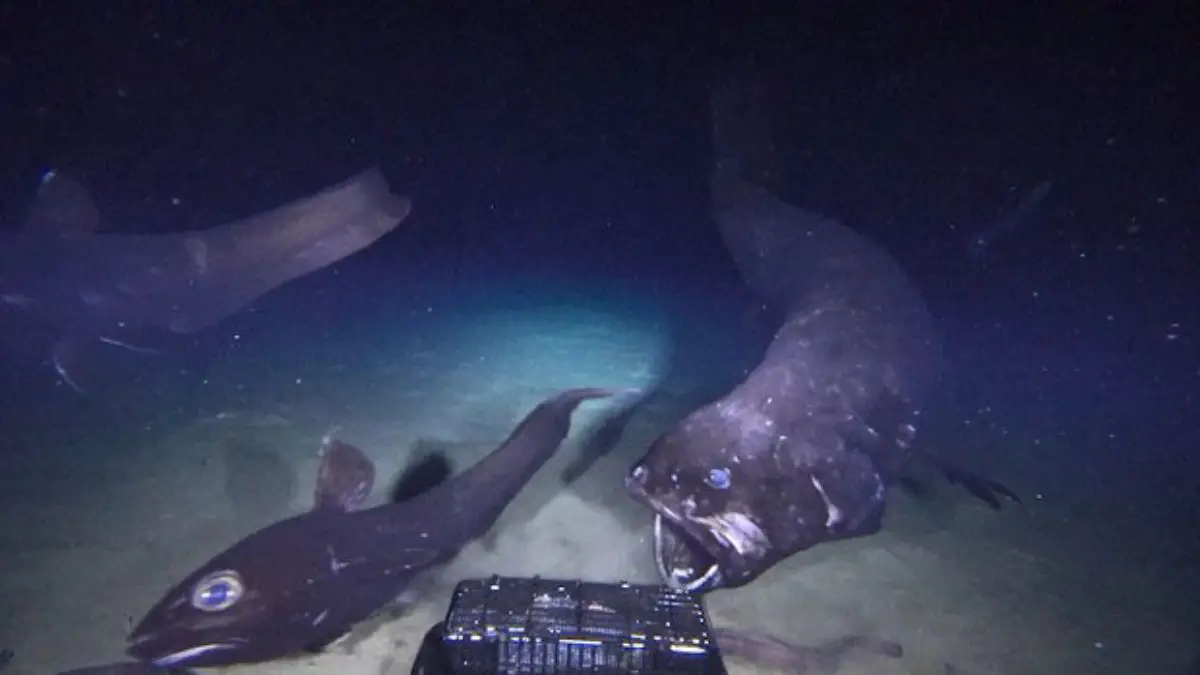Animals
Scientists Capture Extremely Rare Footage of Largest Deep Sea Fish on Earth
The extremely rare creature was mostly unknown to scientists until recently.

We frequently struggle to comprehend how tremendously deep and dark our oceans are.
There is so little light at a depth of 656 feet that photosynthesis cannot even occur. At a depth of around 3,281 feet, the aphotic zone begins, where light is completely absent.
The aphotic zone is a place of total darkness that is inhabited by some of the strangest animals on our planet, the majority of which are quite small and highly evolved to survive in a location without light.
The extremely rare yokozuna slickhead, which is believed to be the largest deep-sea fish in the world, has only been captured six times and was mostly unknown to scientists until recently.
The largest yokozuna slickhead fish known to be caught (at depths below 6,562 feet) was four and a half feet long.
The largest yokozuna slickhead fish ever spotted in a video (seen below), however, is a stunning 8.2 feet long, which makes it the largest deep sea fish with bones on Earth.
And there’s now proof of this after a recent expedition captured footage of the world’s largest deep sea fish.
Watch the full video here:
These are indeed some of the most bizarre creatures that have ever been captured on film considering they don’t resemble anything that we as humans would normally equate with fish or species that are found at such deep depths.
What Makes Yokozuna Slickhead Fish So Special?
Being the world’s largest deep sea fish, or to be more precise, the largest boney deep sea fish, is what makes the yokozuna slickhead fish so unique.
For context, one of the most commonly known deep sea fish species, the Anglerfish, are less than a foot long with some measuring as tiny as 1 inch.
The length of these yokozuna slickheads can exceed 8 feet!
That’s absolutely enormous for a fish that lives at that depth since, at that size, they would need to have a lot of food to thrive, which means they would have to evolve specialized anatomy and behavior for hunting in total darkness at a depth of 1.25 miles below the surface.
You can read the findings from the scientists’ complete study on JAMSTEC.
Typos, corrections and/or news tips? Email us at Contact@TheMindUnleashed.com
